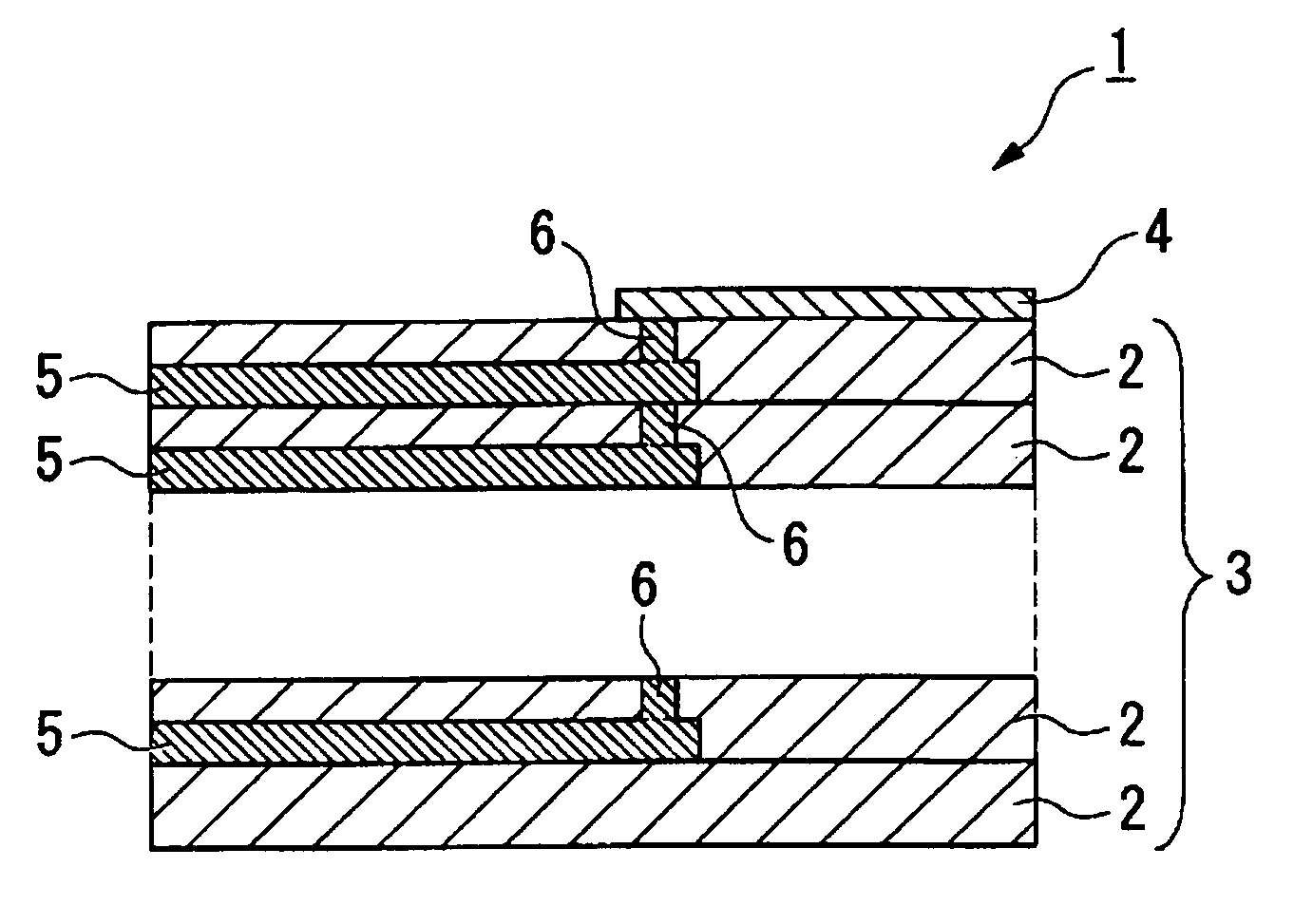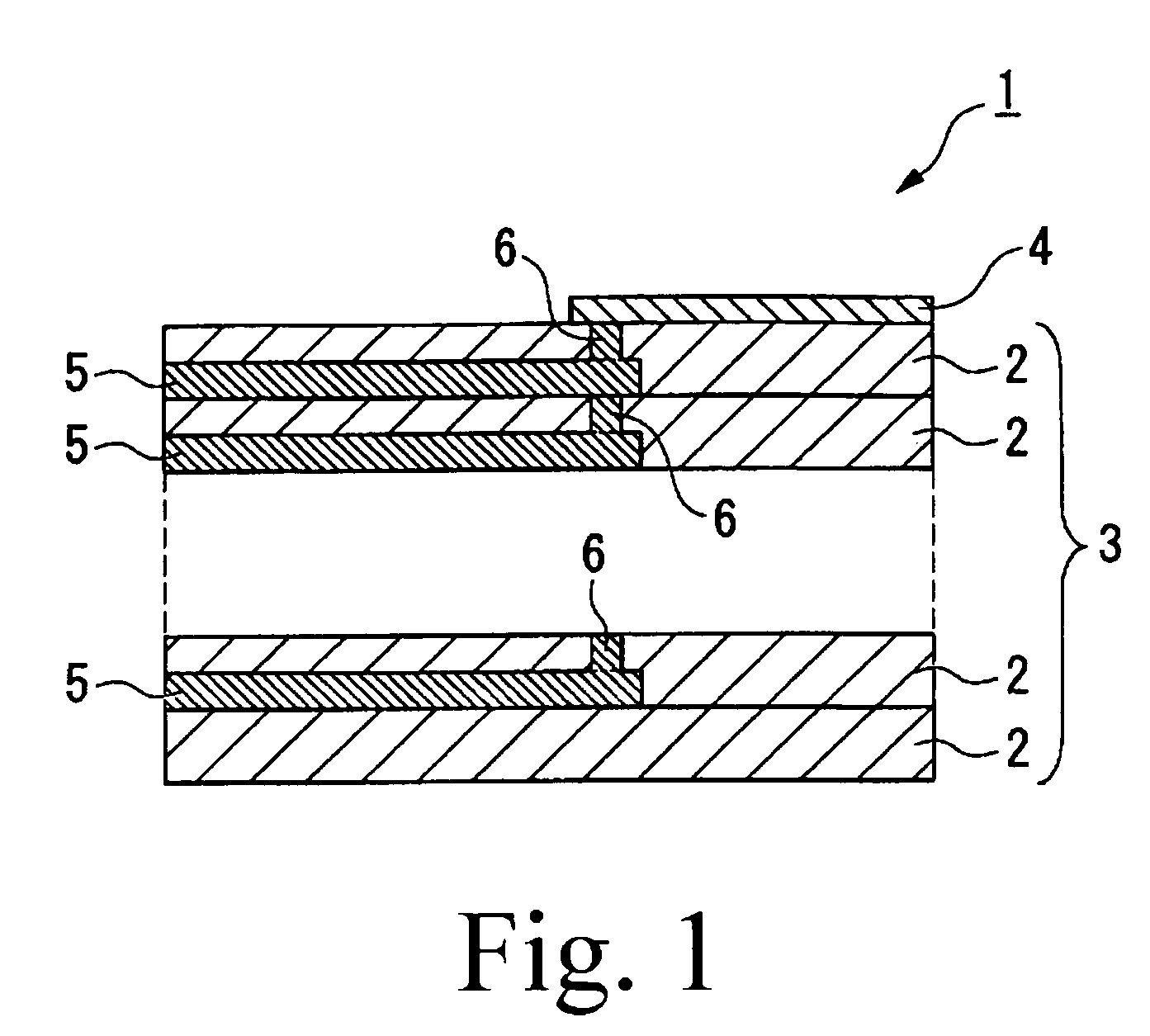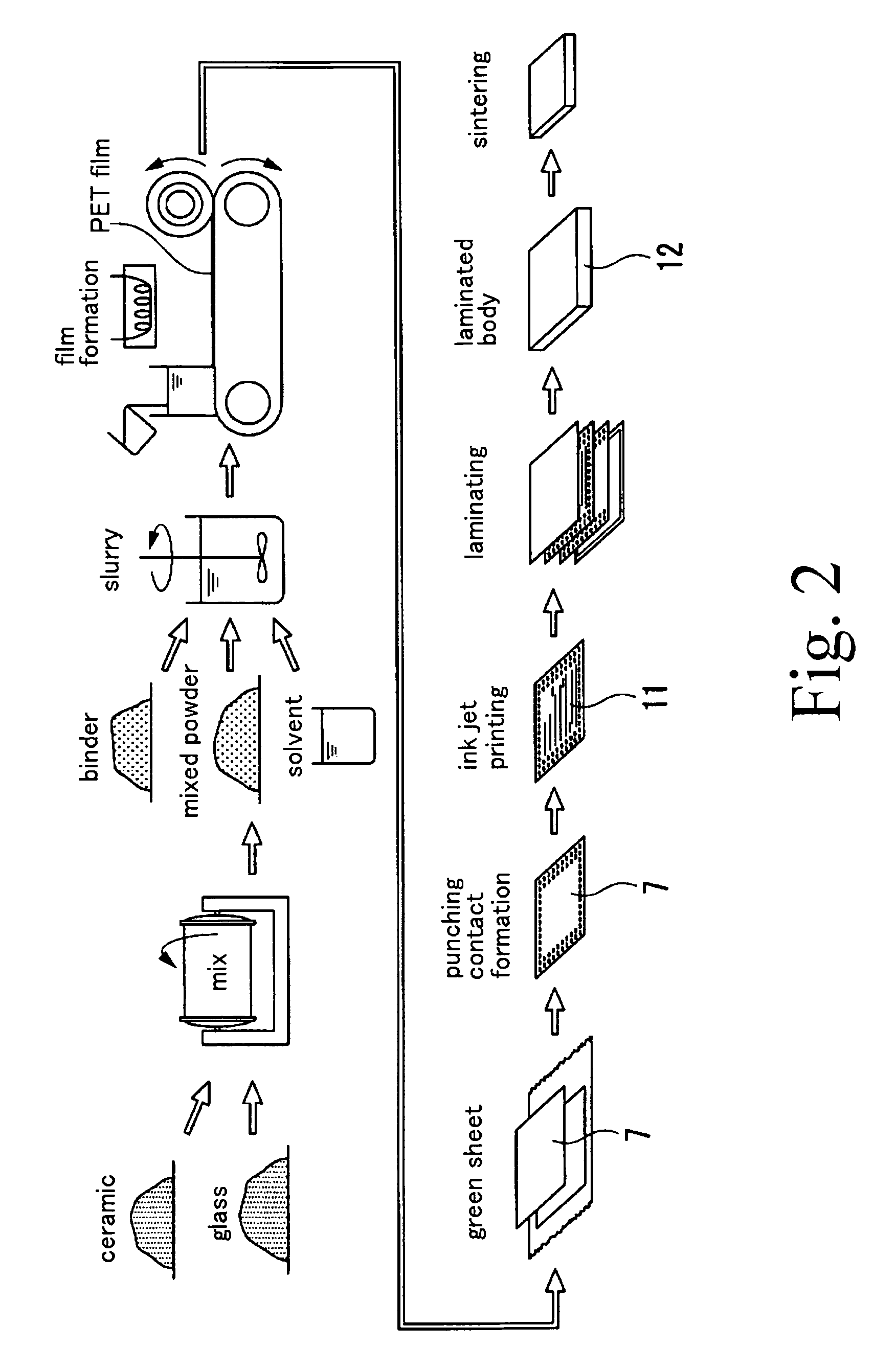Conductive pattern formation ink, conductive pattern and wiring substrate
a technology of conductive pattern and wiring substrate, which is applied in the direction of conductive layers on insulating supports, inks, printing, etc., can solve the problems of screen printing, miniaturization of wirings, and reduction of wiring pitch between wirings, so as to achieve high reliability
- Summary
- Abstract
- Description
- Claims
- Application Information
AI Technical Summary
Benefits of technology
Problems solved by technology
Method used
Image
Examples
example 1
[0347]17 g of trisodium citrate dihydrate and 0.36 g of tannic acid were dissolved in 50 mL of water alkalified by adding 3 mL of an aqueous 10N NaOH solution thereto, to obtain an aqueous solution. 3 mL of an aqueous 3.87 mol / L silver nitrate solution was added to the aqueous solution thus obtained drop by drop.
[0348]A silver colloid solution was obtained by stirring the above aqueous solution for two hours. The silver colloid solution thus obtained was dialyzed until conductivity thereof was decreased to 30 μS / cm or less, thereby desalting the silver colloid solution.
[0349]At the end of dialysis, coarse silver colloid particles were removed from the silver colloid solution by performing centrifugal separation at 3,000 rpm for 10 minutes.
[0350]Thereafter, a compound represented by the following formula (IV) as a surface tension adjuster, xylitol as a drying suppressant and a polyglycerin having a weight average molecular weight of 500 as a polyether compound were added to the silve...
examples 2 to 5
[0354]In each of Examples 2 to 5, a conductive pattern formation ink was prepared in the same manner as in the Example 1 except that the amount of the surface tension adjuster was changed as shown in Table 1.
example 6
[0355]A conductive pattern formation ink was prepared in the same manner as in the Example 1 except that the surface tension adjuster was changed from the compound represented by the above formula (IV) to a compound represented by the following formula (VI). In this regard, it is to be noted that a HLB value of the surface tension adjuster was 8.
[0356]
[0357]wherein m+n was 3.5
PUM
| Property | Measurement | Unit |
|---|---|---|
| surface tension | aaaaa | aaaaa |
| viscosity | aaaaa | aaaaa |
| temperature | aaaaa | aaaaa |
Abstract
Description
Claims
Application Information
 Login to View More
Login to View More - R&D
- Intellectual Property
- Life Sciences
- Materials
- Tech Scout
- Unparalleled Data Quality
- Higher Quality Content
- 60% Fewer Hallucinations
Browse by: Latest US Patents, China's latest patents, Technical Efficacy Thesaurus, Application Domain, Technology Topic, Popular Technical Reports.
© 2025 PatSnap. All rights reserved.Legal|Privacy policy|Modern Slavery Act Transparency Statement|Sitemap|About US| Contact US: help@patsnap.com



